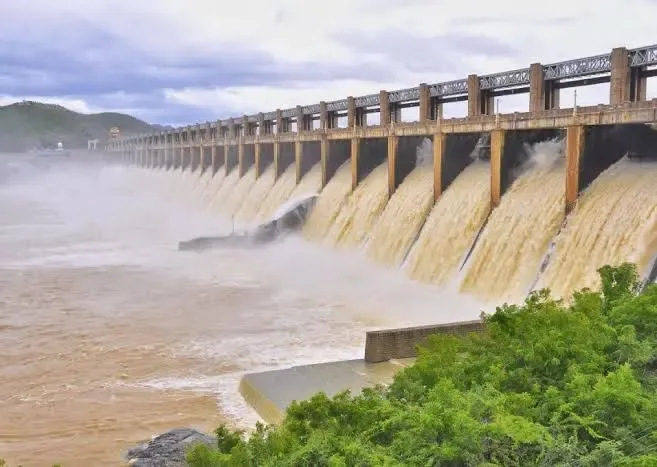Are Over 4,500 Irrigation Tanks in TN Near Full Capacity?

Synopsis
Key Takeaways
- Northeast monsoon benefits Tamil Nadu's water resources.
- Nearly 2,000 tanks exceeded 75% capacity in ten days.
- 4,556 tanks now at full capacity, up from 2,622.
- Kanniyakumari leads with 396 tanks at full storage.
- Increased tank levels reduce reliance on borewells.
Chennai, Oct 26 (NationPress) The arrival of the Northeast monsoon is proving to be highly advantageous for Tamil Nadu's water supply, with almost 2,000 additional irrigation tanks reporting storage levels surpassing 75 percent capacity in just the last ten days.
As per the Water Resources Department's data, by October 15, only 2,622 tanks across the state had storage above the 75 percent mark.
By Saturday, this number dramatically increased to 4,556 tanks—an addition of 1,934 tanks in a mere 10 days. This figure is also a notable enhancement compared to the previous year when 3,197 tanks reached similar storage levels (as of October 21, 2024).
Among the tanks that have achieved 100 percent capacity, 396 are in Kanniyakumari district, 266 in Tiruvannamalai, 243 in Ranipet, 241 in Madurai, 189 in Thanjavur, and 137 in Villupuram.
Villupuram district witnessed the most significant rise, with 131 tanks reaching full storage, followed by 120 in Madurai and 111 in Tiruvannamalai.
Adjacent districts of Chennai, Chengalpattu, and Kancheepuram also reported improved storage levels, with 50 and 62 tanks now filled, respectively.
Officials indicated that the rise in water levels is a result of the well-distributed rainfall pattern during the first phase of the Northeast monsoon, which commenced on October 16.
In addition to the tanks that are filled, 2,274 others hold between 76 percent and 99 percent of their capacity.
Kanniyakumari district leads this category with 788 tanks, followed by Thanjavur (263), Madurai (220), Pudukottai (144), and Tenkasi (109).
Madurai has experienced the greatest increase in tanks in this range, with 189 additional tanks nearing full capacity compared to last week, followed by 122 in Kanniyakumari and 95 in Thanjavur.
Officials anticipate that, with the India Meteorological Department forecasting above-average rainfall for the rest of the season, the number of tanks reaching full capacity will likely continue to rise in the upcoming weeks. Enhanced tank storage will naturally bolster groundwater levels and decrease reliance on borewells.
For farmers, who benefit from free power supply, this translates to reduced groundwater extraction and a more sustainable irrigation approach throughout the state.










